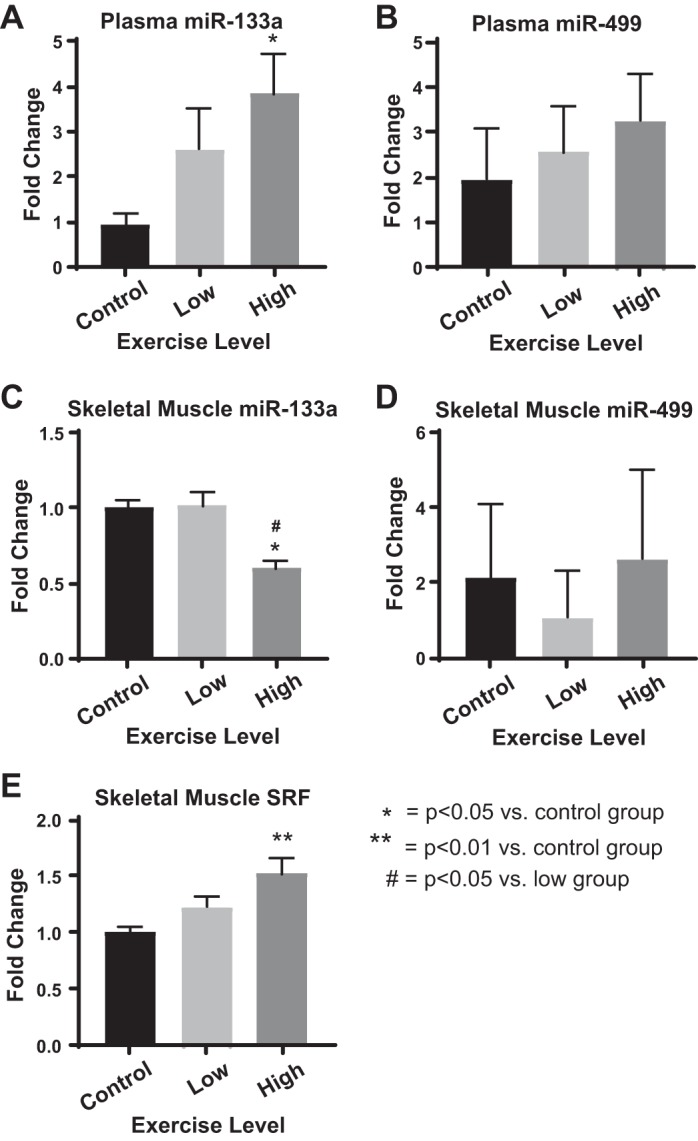Fig. 5.

High-intensity training increased plasma miR-133a while promoting a decrease of intracellular skeletal muscle miR-133a and corresponding increase of the known skeletal muscle target gene of miR-133a, serum response factor (SRF). Expression levels in plasma and skeletal muscle of selected c-miRNAs (miR-133a and miR-499) and SRF mRNA transcript in skeletal muscle were assessed after aerobic exercise training (n = 6 mice/cohort) A: plasma circulating miRNA (c-miR)-133a expression was upregulated by high-intensity exercise training compared with control. A trend toward increased c-miR-133a after low-intensity exercise training was observed. B: in contrast, plasma c-miR-499 levels demonstrated no significant response to exercise training. C: intracellular miR-133a was downregulated in skeletal muscle by high- but not low-intensity exercise training compared with control. D: intracellular miR-499 demonstrated no significant response to training. E: correlating with decreased intracellular miR-133a, SRF, a validated target gene of miR-133a in skeletal muscle (15), was upregulated in response to the high-intensity training compared with control. Data are expressed as means ± SE. One-way ANOVA with Bonferroni post hoc testing was used for normally distributed data (A, C, and E). Kruskal-Wallis testing with Dunn’s multiple-comparison testing was used for nonnormally distributed data (B and D). *P > 0.05 and **P < 0.01 compared with control; #P < 0.05 compared with the low-intensity training cohort.
